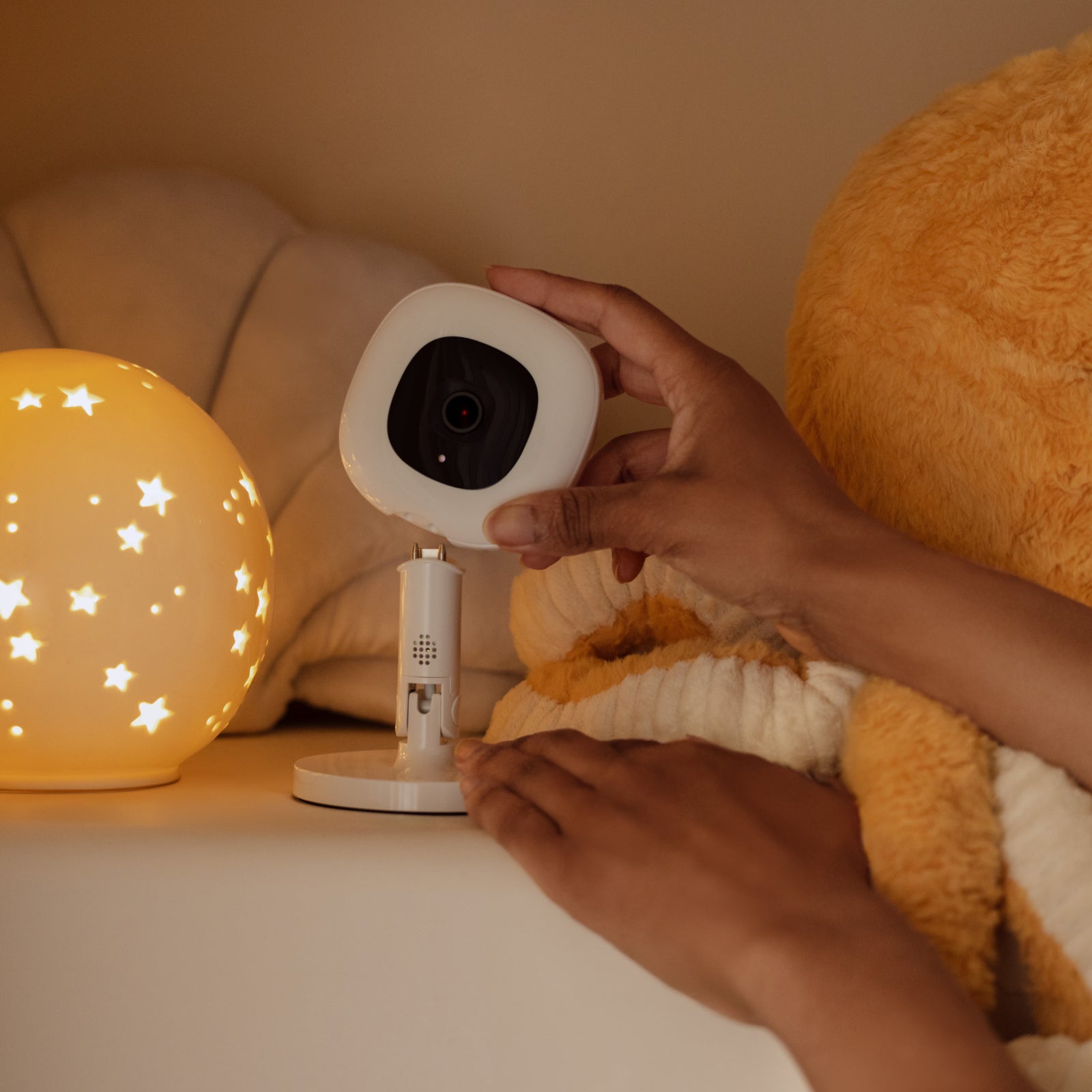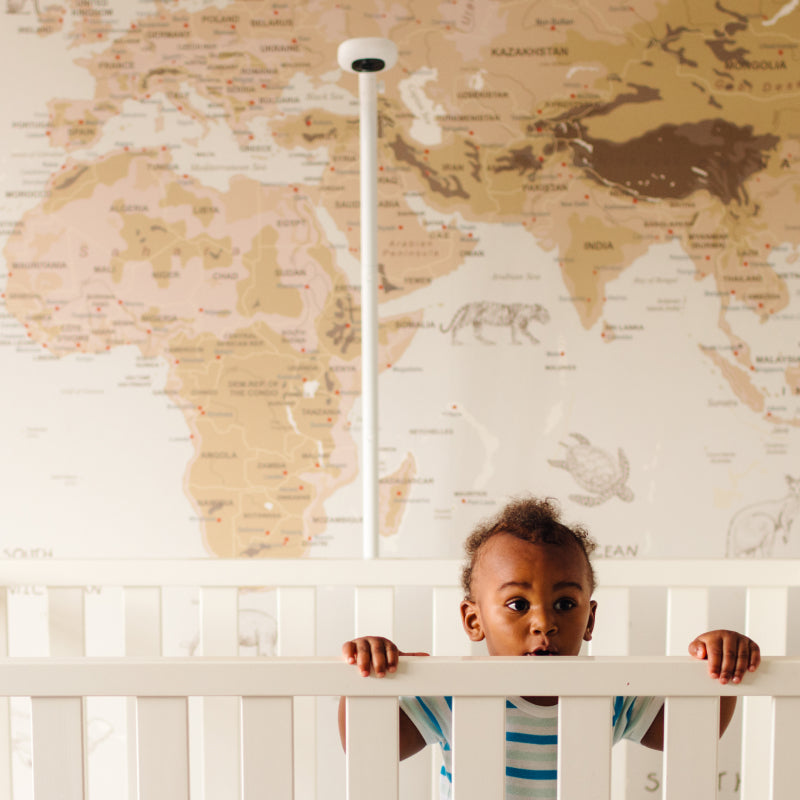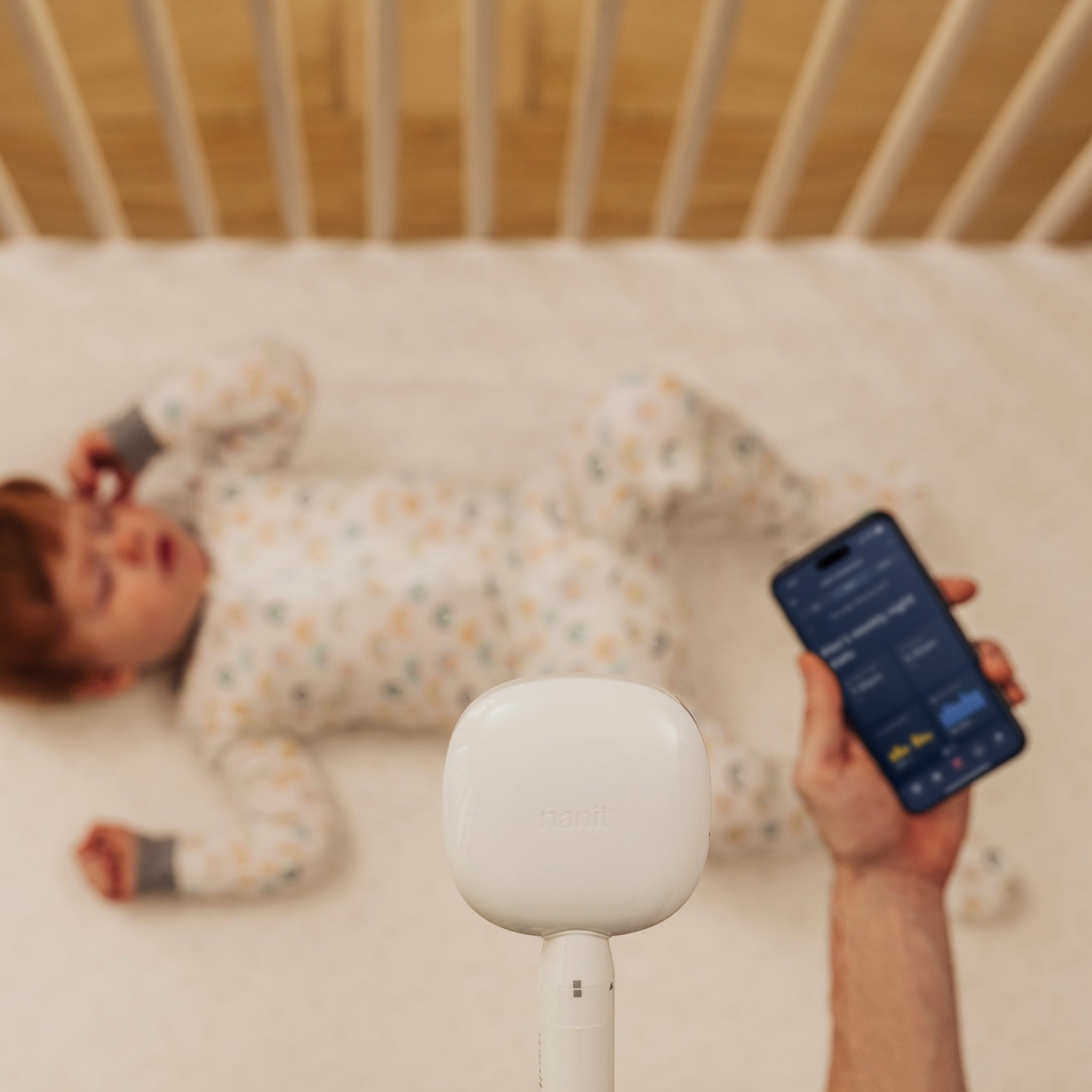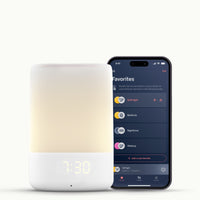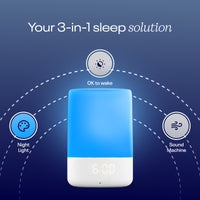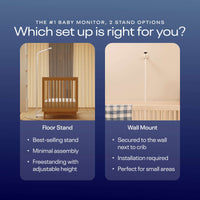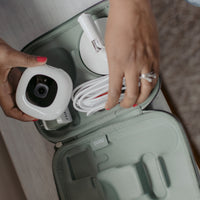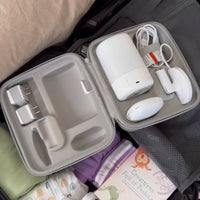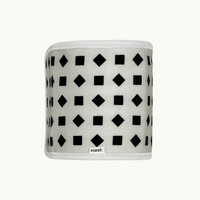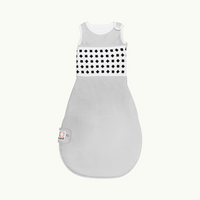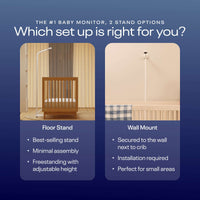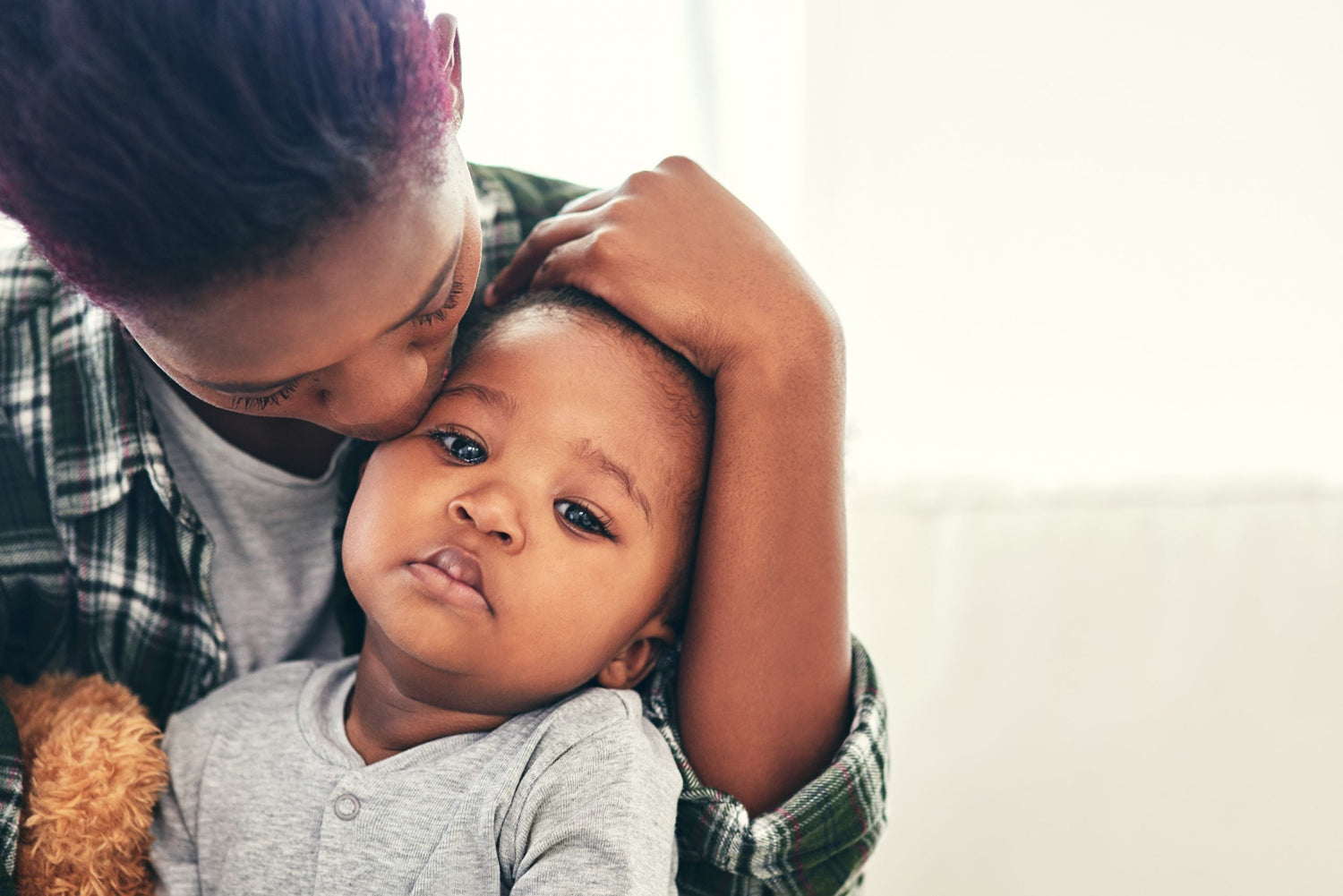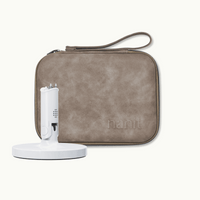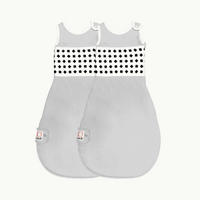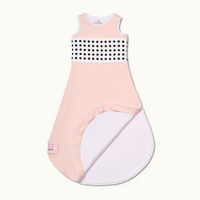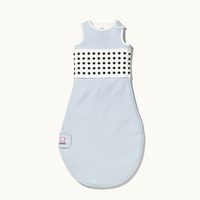It’s one of the great head-scratchers of raising a baby. Your little one is sleeping through the night like a pro and on a predictable sleep schedule. And then, out of the blue, they start waking up in the middle of the night and crying like they just found out the Tooth Fairy’s real identity.
So what’s causing those disruptions in your baby’s sleep? And, what can you do about it?
We talked to sleep expert and consultant Brooke Nalle of Sleepy on Hudson to get the inside scoop on everything you need to know about sleep disruptors in baby’s first two years.
What is a sleep disruptor?
Quite simply, a sleep disruption is anything that disrupts your baby’s sleep. A disruption can be caused by any number of issues, but Brooke breaks down the most common ones into the following four buckets:
- Developmental milestones – A sleep disruption caused by a cognitive or physical milestone is often called a sleep regression. That means whenever your baby grows by leaps and bounds – whether it’s learning how to stand up or roll over or talk – it can actually throw sleep off. This is due to what Brooke refers to as “highly charged REM sleep activity.”
“REM is the sleep cycle where babies practice and process – I call it homework,” Brooke says. “That’s why something like rolling is disruptive. The baby will be happily sleeping on her back and her brain says, ‘Here we go, let’s work on rolling.’ Then she’ll wake up because her body rolled herself over.”
A sleep regression can show itself in increased wake-ups, hysterical crying and screaming at night, as well as the refusal of a nap during the day. It can last anywhere from two to four weeks, and sometimes longer if a child doesn’t return to their healthy sleep habits after they’ve mastered the new skills that’ve been keeping them awake.
- Teething – Ah, yes, teething, one of the great nemeses of your baby’s sleep! It starts anywhere from 3 to 7 months and can literally make sleeping a pain. “I tell families it’s like if you had a headache that’s raging,” Brooke says. “Babies are trying to sleep but they just can’t.”
The first four to six teeth are typically the most difficult to deal with, Brooke says, followed by molars that come in around 12 months and 2 years. During teething, watch out for shorter daytime naps, more nighttime wakeups and earlier morning wakeups, all due to discomfort.
“You’ll know it’s teething if everything is going fine and then things that are normally easy for your baby are not easy,” Brooke says. “They get really cranky early or a feeding that’s normally easy is no longer easy.”
- Illness – Just like with teething, a cold or flu lasting a few days or longer can really throw off your baby’s sleep in more ways than one. A baby’s sleep behavior during sickness often looks like your own when you’re fighting a cold, i.e. more sleeping due to fatigue and increased nighttime wakeups. You might also see shorter naptimes during the day.
- Travel or life change – Vacation is a time for fun and relaxation. But it can also disrupt your baby’s sleep, particularly when you get back home and your baby’s sleep schedule is still on vacay mode. Travel to a different time zone can be especially tough, though weekend trips to Grandma’s can be disruptive too if your baby’s not used to the environment and not in their best sleep zone. Similarly, any kind of move – whether it’s a house move or a switch to daycare – can throw your baby’s sleep off temporarily.
When are sleep disruptions most common?
Every baby is different and may experience disruptions at different times. According to Brooke, though, it’s most common to see sleep issues pop up around these ages:
- Four months: The 4-month sleep regression is a well-known disruption. After all, there’s a lot going on at 4 months, both in terms of the way your baby sleeps (due to changing sleep patterns) and what’s going on developmentally. At 4 months, infants learn how to roll, gain depth perception and also learn cause and effect, i.e. “if I do this, Mommy will come running,” Brooke says. Babies can also start to get a sense of object permanence – the idea that an object or person exists even if they’re not in the room – which can lead to separation anxiety as infants wonder where their parents have gone if they’re not nearby.
Because there’s so much going on that can affect a baby’s sleep, this is the stage when many parents start to sleep train since “what was working before isn’t working anymore,” says Brooke.
- Nine months: Around 9 months, you might also see an increase in sleep issues due to new skills. “At 9 months, babies are usually learning how to pull to stand, and they can’t get back down, which interrupts sleep,” Brooke says. “There’s expressive language that starts to come in at this age too. They’re not talking, but maybe signaling or understanding what you say. So there’s a cognitive leap as well as a physical leap.”
- Eighteen months: The other big transition time for sleep happens at 18 months when babies start talking.
“It’s a huge, huge, huge cognitive leap because that’s when babies really start talking,” Brooke says. “They’re talking in their sleep, they’re waking up at night, they’re hysterical when they wake up because they have a ‘cognitive burst,’ which is basically like the brain is fireworks.”
In addition to the stages above, big physical milestones like walking can disrupt sleep, and separation anxiety can pop up throughout baby’s first two years. Nap transitions can also affect nighttime sleep after 18 months, when your baby goes from two naps to one.
So what can you do about sleep disruptions?
Now that you have an overview of sleep disruptors, here’s what you can do to make sure they don’t turn the whole family’s sleep upside down.
For sleep issues caused by developmental milestones, do your best to help your little one through the change and then get back to healthy sleep habits as soon as possible. If you do choose to sleep train at 4 months, it can help your baby better cope with future sleep regressions at 9 months and beyond.
If your baby’s teething or fighting an illness, they might wake up more during the night looking for comfort. The last thing you want to do is deny them TLC when they’re in need. Once again, get them through the disruption, then return to their normal sleep routine after. “You pick your battles,” Brooke says. “If your child has been really miserable and feeling terrible, you do comfort them. As soon as they’re better, you reset a bit knowing that she’s going to cry a little bit more at bedtime.”
Similarly, when you travel, you might have to put your sleep schedules and plans on hold until after the vacay. “I always joke that what happens on vacation stays on vacation!” Brooke says. “When you travel, do the best you can.Try to get your baby to go down to sleep the way she does at home. But if it’s 3 a.m., she’s crying and you’re in a hotel and don’t want to wake everybody up, it’s okay to break your rules. As soon as you get home, though, go back to what you were doing.”
Some things you can do to prepare for sleep in a different time zone? Get ready for time zone changes ahead of time and, once you’re at your destination, help baby distinguish night from day by keeping them in sunlight during the day and in total darkness at night. You can find more sleep tips for traveling here.
But…beware of negative sleep associations.
If your baby is 6 months and able to sleep through the night without feeding, Brooke cautions against adding in nighttime feeds as a way to comfort your baby when they’re experiencing a sleep disruption.
“When you start feeding again at night, it’s a bit of a slippery slope,” Brooke says. “They start to rely on those ounces and might have multiple feedings at night, which is hard to get rid of. If you can comfort with rocking, that’s better.”
Regardless of how you decide to get through a sleep disruptor, working on good sleep habits is an ongoing process.
“It’s something that you always have to work on,” Brooke says. “You’ll have three to four months where everything is bliss, and then you’ll have a couple of nights where it’s rough because of teething or illness or travel. Just reset and get back on track as quickly as you can.”
Is your baby getting enough sleep? Check out our checklist for deciphering baby’s sleep here.




